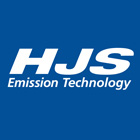Equipping cranes with HJS systems cuts emissions and investment to a minimum
In response to the continuing high level of nitrogen oxide emissions in the Netherlands, the Dutch government has launched a multi-billion-euro subsidy programme to reduce NOx emissions as part of a climate change package, the first measure of which is a 100 km/h (62 mph) speed limit on motorways. A large part of this €5.1bn budget is being allocated to the agriculture sector as well as other environmental protection measures. The transport sector will see €79m of public funds invested in inland waterways between now and 2030.
Since ports are known all around the globe to be emissions hotspots, particular attention is being paid to them. Owing to the high volume of traffic and the geographical concentration of ships, cranes, generators and trucks, all powered by combustion engines, the critical thresholds for nitrogen-oxide and particulate emissions are regularly exceeded and very high compared to other areas.
An HJS Stage V emission upgrade specifically tailored to the machine package provides the best compromise between ecological and economic requirements. HJS’s “First Fit” approach meets machine-specific requirements and significantly reduces the large sums invested in fleet modernisation.
Cranes – a particular challenge
“Since cranes mostly operate at low load, they pose a particular challenge in terms of exhaust emissions control”, explains Thomas Vieth, who is responsible for Customer Upgrade Solutions at HJS. HJS masters this challenge with the expertise gained from 40 years of experience developing emissions reduction technology and systems. Its patented Thermo Management Technology (TMT) integrated into the exhaust aftertreatment system supports compliance with emissions requirements in real-life operation. Thanks to this technology, the NOx reduction system (SCR; see figure) can be operated in an optimum functional range even at low loads and low exhaust-gas temperatures. “Upgrading the entire system equipment as quickly as possible is by far the best way to greatly improve air quality in our cities and ports and to keep investments to a minimum,” Vieth continues.
Among the various types of vehicle in which HJS exhaust aftertreatment systems (original and retrofit equipment) are installed are, in addition to cranes, mobile and stationary machines, but above all vans, public transport buses and local authority vehicles. Our comprehensive modular system enables these systems to be easily adapted to any vehicle or machine with little time and effort. The extensive product portfolio meets the highest quality standards and helps make the existing fleet of vehicles and machinery more sustainable by extending their service life. And when it comes to the actual task of retrofitting its systems, HJS has a dedicated network of local partners and national representatives at its disposal.
 Go to HJS UK
Go to HJS UK

